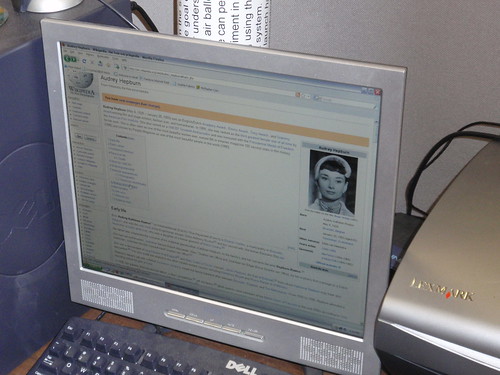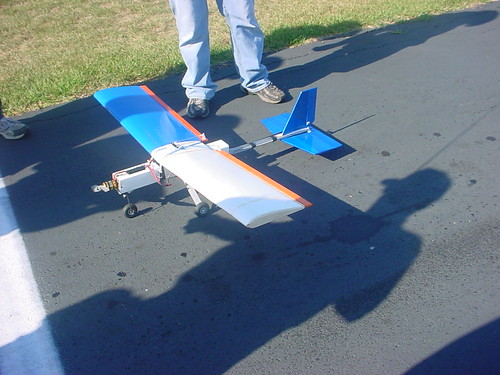Today was the first official day of our competition. The day consisted of technical inspections for each team. The technical inspection is comprised of several portions which must each be passed in order to begin attempting the missions. Safety is a main emphasis of the inspections, they want to ensure that each team's plane is ready and can safely fly. The inspections consist of weighing the plane, testing plane controls as well as a box test. The competition rules require that the tools and plane must fit in two boxes, each a maximum of 2'x2'x4'. The inspection team measures the box and also rotates the box on each end to test the packing of the tools and components.
 Officials completing inspection testing of an entry
Officials completing inspection testing of an entryOur team began by observing the safety inspections of other teams. Being our first year, we were unsure how the inspections would go. After seeing a few teams fail their inspections, we realized some issues that our team would have, especially with the box. The first thing we noticed was the low tolerance for the box size. After a careful inspection we realized that due to the roofing tabs on the box, the width was just over 2'. We assessed the situation and began making modifications to our design. Also after observing the packing of other team's boxes, we decided to make some adaptations to our packing. We wanted to ensure that none of the items would move and incorporated a lot of bubble wrap and packing materials.
 The wing box and team's work area
The wing box and team's work areaWe were unable to do our technical inspections due to timing issues, there were many teams ahead of us and they closed the site for the evening. We are on the list and will be one of the first teams to test in the morning. Lots of teams were having difficulties with the inspections today, there are still 25 teams signed up after us for their inspections.
 Fuselage and landing gear
Fuselage and landing gear Wing Box
Wing Box
The team is working on a few more changes and alterations to the plane and packing. We are preparing for tomorrow and hopeful that we will pass our inspections and be able to begin the mission tests.










 Example of an ARF Plane
Example of an ARF Plane Students Monokoting a wing
Students Monokoting a wing Working on the tail
Working on the tail The labs favorite actress
The labs favorite actress Ready to fly
Ready to fly